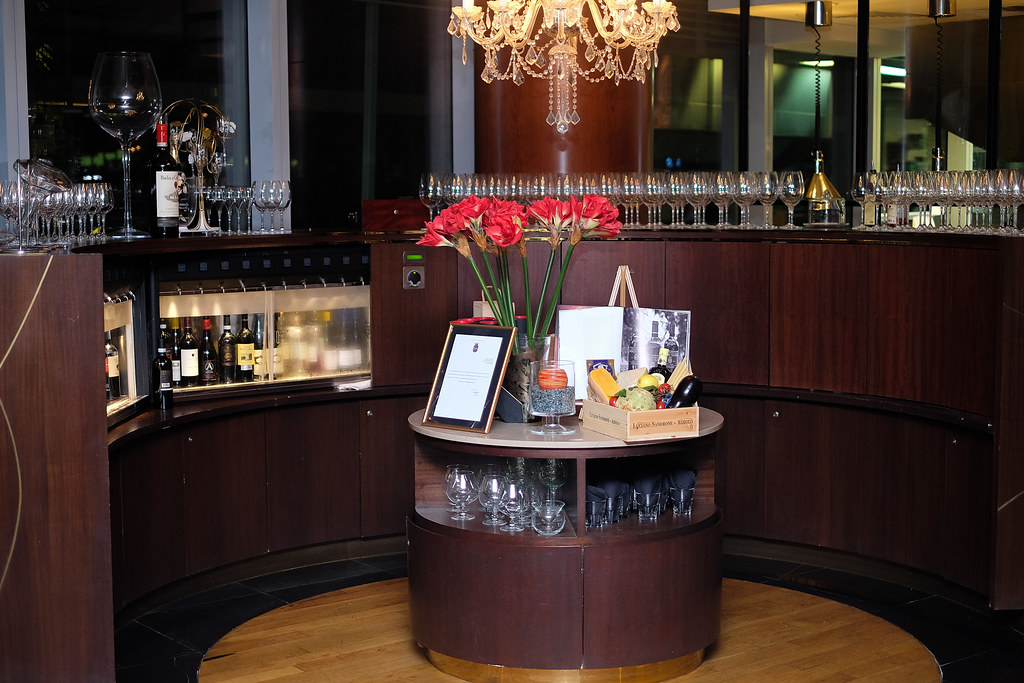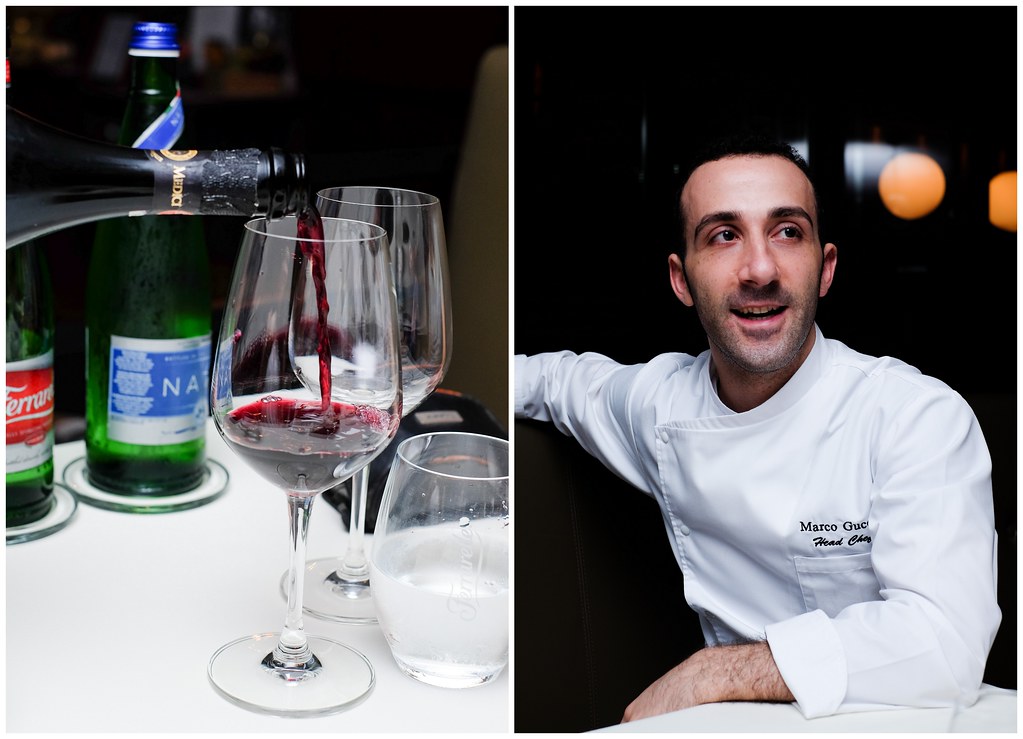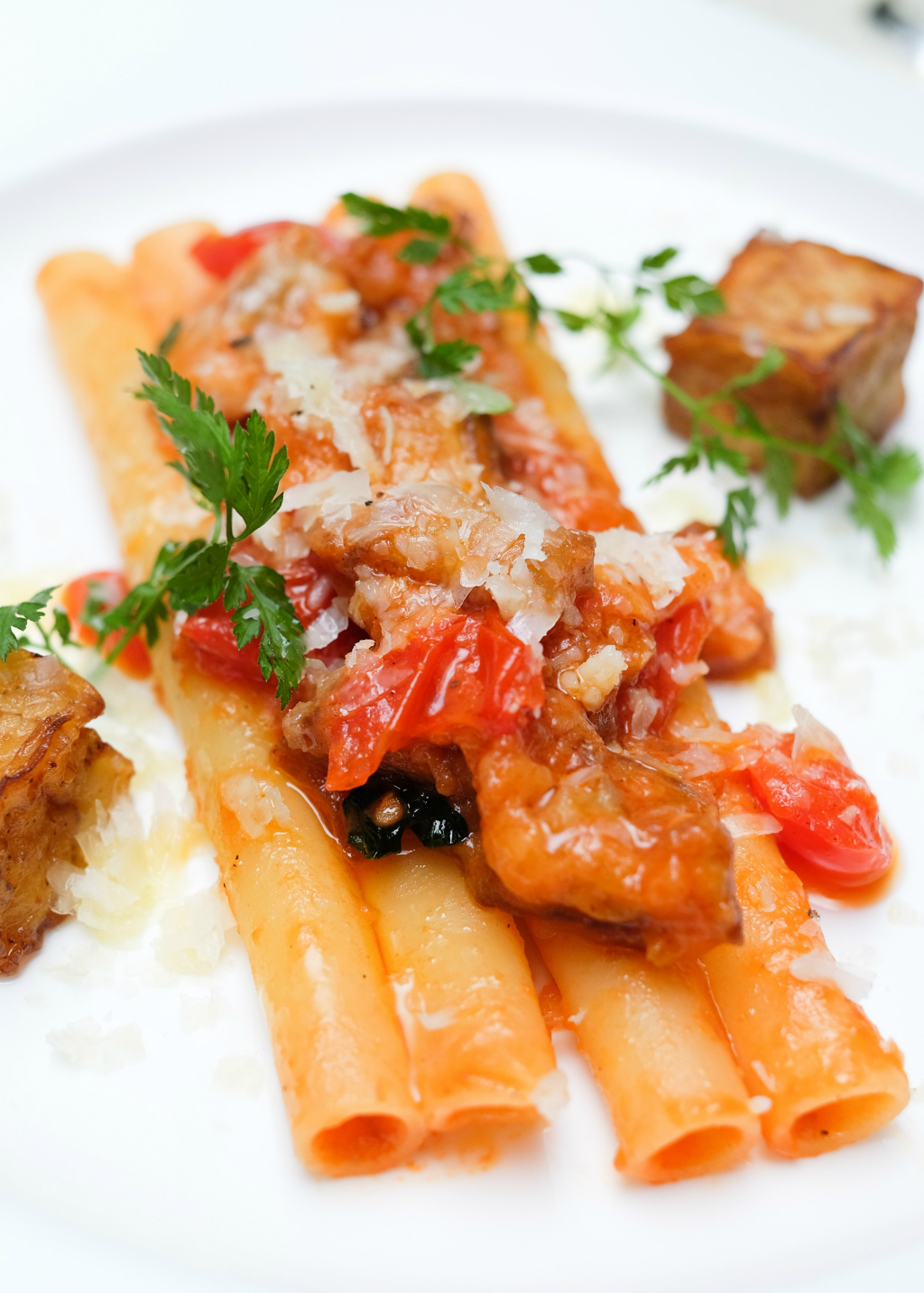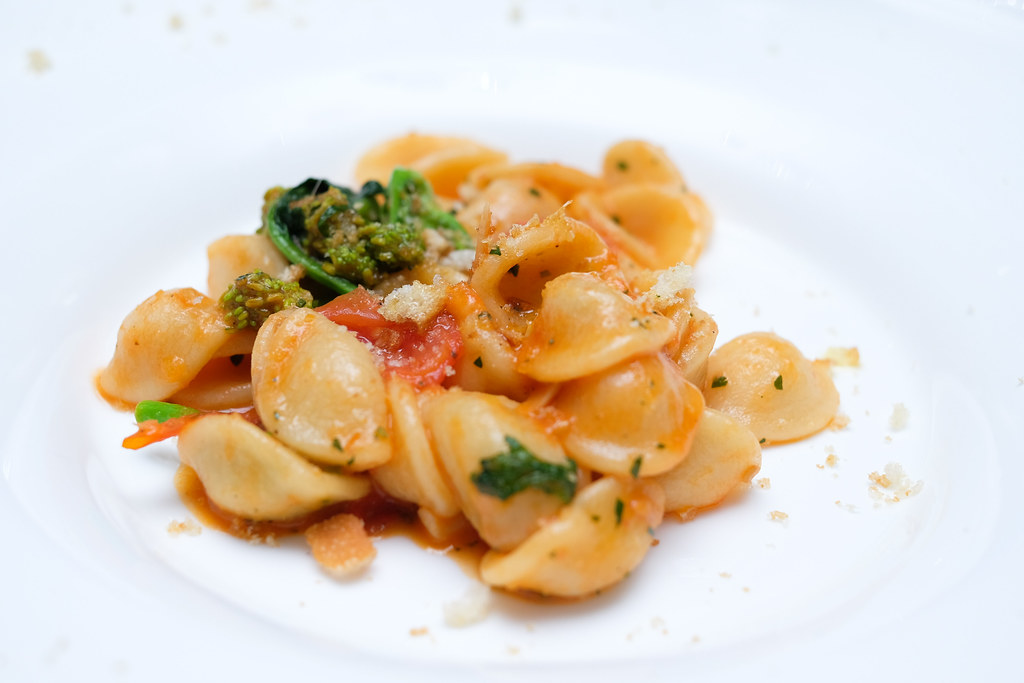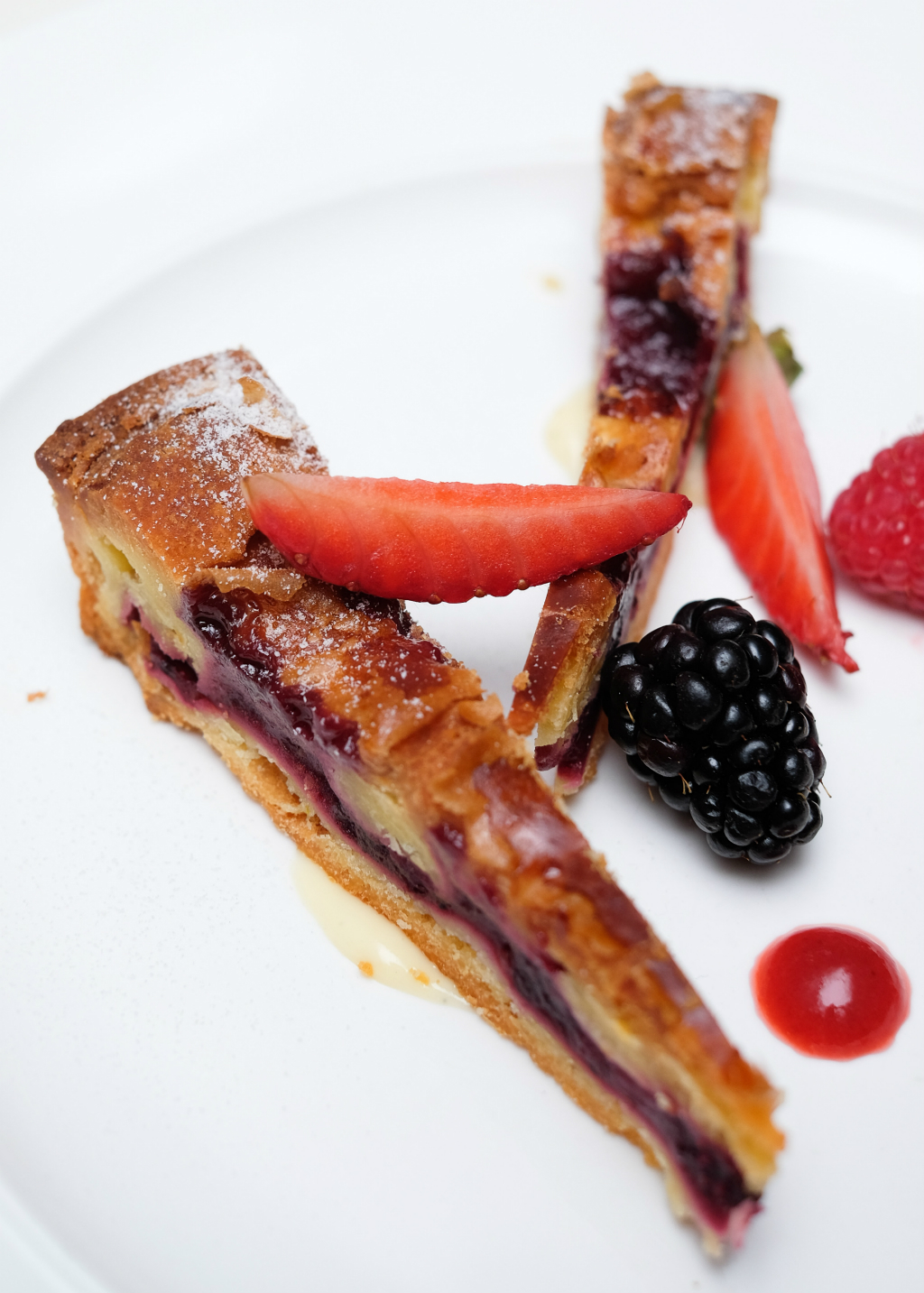Zafferano’s Festival della Pasta Menu: A Pasta-licious Menu Every Saturday
December 06, 2015

Imagine travelling the whole of Italy: south to north, region after region, tasting its fabulous pasta along the way. Imagine eating each speciality; learning its history, its provenance, its culture. Imagine again, enjoying a glass of the local wine – the nectar of terroir – with each pasta. What a delicious education at Zafferano – just imagine!
After having brunch at Zafferano the previous time, the husband and I have been talking about their pasta. And it seems like our pasta craving is satisfied with Zafferano’s new Festival della Pasta promotion!
Every Saturday, from now till 30th January 2016, Chef Marco Guccio has prepared a menu of 5 pasta dishes, a dolci plus biscotti. Exploring pasta from the lighter dishes to the more substantial ones, we see how each region��’s terroir affects shape and ingredient. In South Italy, there is a preference for lighter dishes with more vegetables, and the use of spices such as basil and oregano. Whereas in North Italy, stuffed pastas filled with meat are the order of the day, and recipes are richer with butter and cream.
1st Course : Zitoni dalla Sicilia
Wine pairing: Catarratto & Chardonnay Firriato Santagostino 2013
At the southern tip of Italy sits the beautiful island of Sicily. Brimming with sumptuous vineyards and seafood from the surrounding waters, Sicily was home to the earliest cookbook writer in history, Mithaecus. Pasta was also first recorded on the island in 1154 and takes mainly long or shortcut and large forms, exemplified by the zitoni.
Tubular and smooth, the zitoni holds well with chunky sauces, lending itself to the light Sicilian palate, which tends to replace cream and butter with fresh tomatoes and Sicilian olives. Local plants like the melanzane, a round eggplant, and the crunchy and sweet Pachino tomato, are used extensively in Sicilian cuisine, including as sauces for pasta. Ricotta is also common in Sicily, including in ricotta salata, made from the whey of sheep milk which is pressed, salted, baked in a woodfire oven, and aged for at least 90 days.
Chef Marco remembers his grandmother making ricotta salata at home when he was growing up, so he decides to share that memory in this course. ‘Zitoni with violet eggplant, fresh cherry tomatoes Pachino, and salted ricotta cheese” features the seasonal ‘malenzane’ eggplant from Sicily, with Pachino cherry tomatoes in Pomodoro sauce, finished with grated Ricotta Salata. I was told htat zitoni is a dish served to the soldiers during World War II as well!
2nd Course : Orecchiette dalla Puglia
Wine pairing: Chardonnay Tormaresca 2013
Bordered by azure beaches, Apulia on the southern mainland is well known for its tomatoes, seafood and peppers, as well as cucina provera or peasant cooking, which uses all that is available to cook. Also famous is orecchiette, made by local women on the streets of Bari Vecchia, who roll out a knob of dough on a wooden board and with a sharp turn of the thumb, form a pasta resembling a small ear — thus its name, which is Italian for ‘small ear’.
A local crop is cime di rapa, or turnip greens. This wilder member of the broccoli family is seasonal in mid to late autumn and is a pleasantly bitter green traditionally served with the orecchiette. Chef Marco serves ‘Orecchiette with fresh turnip greens and tomatoes, and anchovies’ in its traditional earthy and rustic charm, with a base made of extra virgin olive oil, garlic, a touch of butter, and chopped Italian anchovies; added to the base will be blanched turnip greens, fresh tomatoes, and herbs. The turnip greens, which resembles kai lan flower and give a mild bitter taste, pair exceptionally well with the orecchiette and tomatoes. You will notice that breadcrumbs are sprinkled around the plate. It is done so because in the past, the Italians would just crush the remaining bread crumbs from the previous night and serve it together with the pasta (of course, it wasn’t so atas lah!)
3rd Course : Tortellini dall’ Emilia-Romagna
Wine pairing: Lambrusco Salomino Concerto Medici Ermete 2013
Moving on to the North, Emilia-Romagna is a wealthy and developed region with culinary delectables ranging from eels and clams to pork sausages, balsamic vinegar, and of course, pasta. Filled pasta is especially renowned here; among these the tortellini is said to have a cheeky origin.
The story goes that Lucrezia Borgia, the luscious daughter of Pope Alexander VI, stayed one night at an inn. The innkeeper, besotted by her beauty, peeped at her through the keyhole of her room. All he could see through the tiny opening was Lucrezia’s navel, but it sent him into such a paroxysm of passion that he created tortellini, a navel-shaped pasta. I don’t know how true is this but imagine if he saw something else instead of navel, perhaps we would have a different shape that all men love. LOL!
Stuffed with a mix of pork or cheese, tortellini is often served with a rich chicken or beef broth. At Zafferano, the homemade tortellini filled with prosciutto and mortadella, is served with a light and clear chicken consommé poured at the table. According to Chef, this has got to be the most challenging pasta amongst all as he has got to skillfully wrap the pasta to achieve a navel shape.
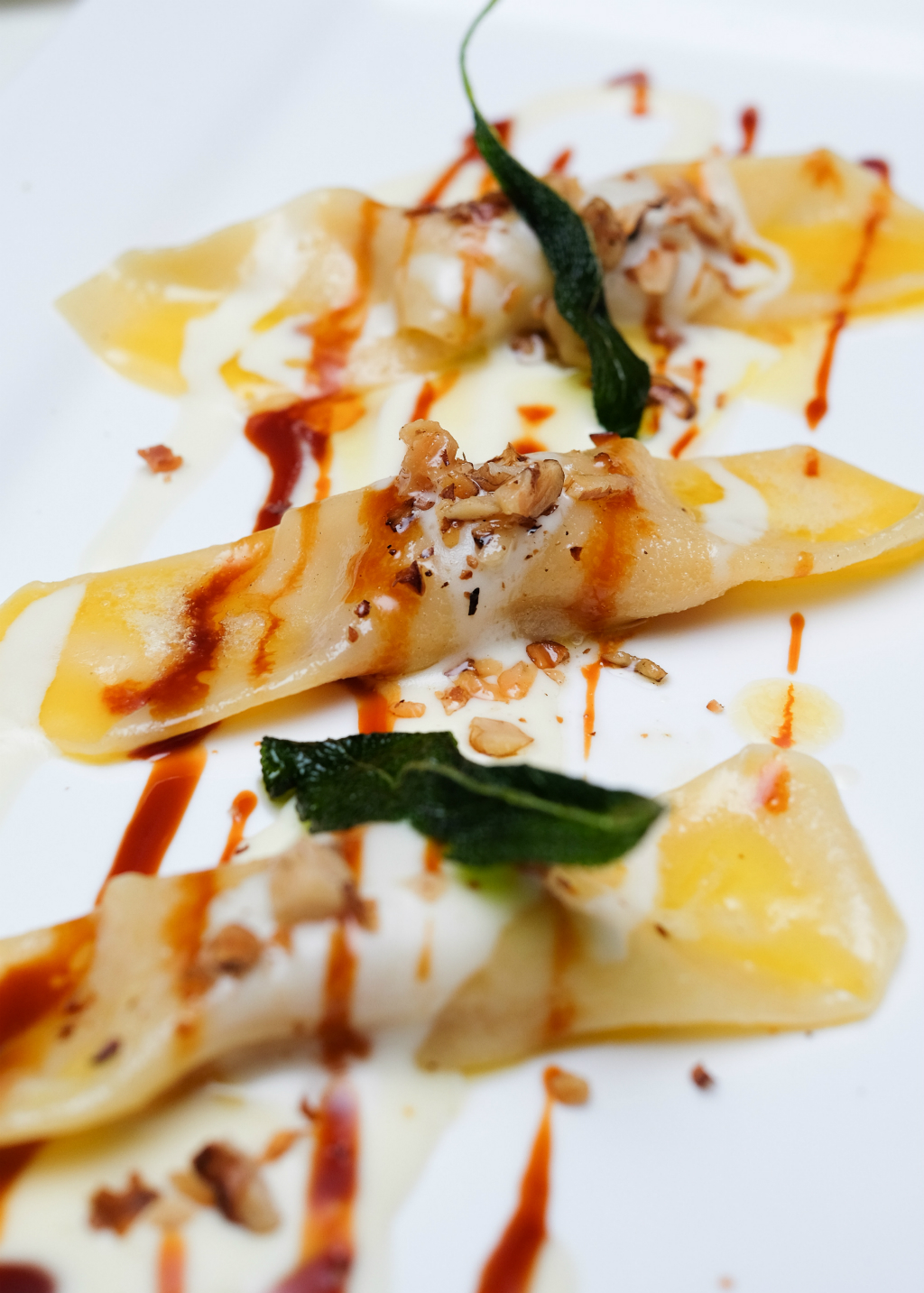 4th Course: Casoncelli dalla Lombardia
4th Course: Casoncelli dalla Lombardia
Wine pairing: Rosé Franciacorta Barone Pizzini 2011
Lombardy, unlike most other Italian regions, uses less tomatoes and olive oil in its cooking, and is more heavily influenced by Austria and Central Europe. The huge rice fields in Lombardy also means polenta and risotto dishes dominate the cuisine. But pasta is never forgotten in Italy; and Mantova, a city of Lombardy, is home to casoncelli, a uniquely sweet stuffed pasta. Typically filled with breadcrumbs, parmesan and garlic, but without meat, casoncelli is shaped to look like wrapped candy and is traditionally served with burro e salvia, or melted better infused with sage.
I wasn’t too welcoming about the idea of having sweet pasta in cheese. But after trying Chef’s ‘casoncelli with pumpkin, Taleggio cheese fondue, butter and sage emulsion, and walnut’, I was impressed. Chef Marco fills his handmade casoncelli with oven-stewed ‘zucca’, pumpkin in season from Mantova, an egg yolk, parmesan cheese, and raisins mix, and serve it with a smooth butter and sage emulsion, with Taleggio cheese fondue, and topped with chopped walnuts. It’s interesting to see how the cheese fondue pairs exceptionally well with the pasta, and you get a party of flavours and textures in your mouth. This is Chef’s favourite pasta as well.
 5th Course : Agnolotti dal Piemonte
5th Course : Agnolotti dal Piemonte
Wine pairing: Barbera d’Alba Adriano 2013
The northern region of Piedmont — Italian for ‘foot of the mountain’ – is surrounded by the Swiss Alps and home to magnificent wines and an abundance of cheeses. Even so, the pasta identified with the region — agnolotti – is filled only with braised meat, and is uniquely shaped and different from other stuffed pastas such as ravioli.
A signature dish of Zafferano, Chef Marco serves his handmade agnolotti, filled with slow-cooked oxtail, over a celery puree with pistachio nuts for an added crunch. The fork tender slow-cooked oxtail is marinated for 12 hours to achieve the desired flavor. This is my favourite dish for the night.
Having tried so many pasta, we are filled to the brim by now. Crostata della Mamma was served to end the night. A much-loved dessert in all Italy and a domestic classic, the rustic pie that is the Crostata is made from dough known as pasta frolla, and flavoured with clarified fat and butter.
The resulting buttery crust is both crumbly and crunchy, and is used to hold a filling of fresh seasonal fruits. Chef Marco recreates his mom’s crostata, which is filled with a delicious jam made with mixed berries in season, and calls it ‘My mom’s crostata with homemade fresh berry jam’.
The pasta menu also comes with Cantucci dalla Toscana that was served with Vin Santo Farnito Antinori, a traditional Tuscan dessert wine. Once an essential item in the rations of Roman soldiers, this salted biscuit has evolved into a sweet treat thanks to the efforts of a pastry chef named Antonio Mattei in the 19th century.
I love it that each pasta comes with a story to tell – how it came to be and why it is special. To enrich this experience, Zafferano offers the ‘wine pairing’ option in which a regional wine will accompany each pasta course. The Festival della Pasta menu is priced at $85++ and a regional wine pairing option is priced at an additional $75++.
Zafferano Restaurant & Lounge
Address: 10 Collyer Quay, 43rd Floor, Ocean Financial Centre, Singapore 049315
Tel: 6509 1488
Website: www.zafferano.sg
